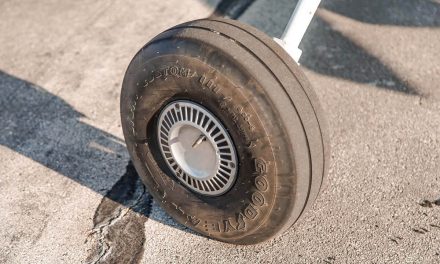Over the last few issues, I’ve shared Paul New’s wisdom on a variety of seat rail inspection and maintenance topics, all subjects covered in his May 2022 webinar. One topic that Paul mentions, which isn’t addressed in the seat rail AD, is seat roll pins. There are a few locations on seats where two pieces are held together by a spring pin, split pin, or roll pin instead of screws or bolts. These pins work perfectly as long as they are tight in the holes, but over time they begin to wear and migrate out of position.
“This is not part of the AD,” New said. “But if the pins start to move, they’re going to shear. They’re going to get out of position, and it’s going to be a problem.”
As preventative maintenance, New said, “You can put safety wire through. Just a loop of .025 or .020 safety wire can hold it in place. You can do this, but what will you be hiding? Now the roll pin is not going to migrate, but you’re not going to have clear evidence when the hole starts to wear.”
Unfortunately, the roll pins that are the most likely to fail are the ones that hold the seat back upright.
“Someday when you’re just leaning back in the seat, they will let go because there are two pins on each end, and they have migrated out of position. They’re on the floor somewhere, but usually in pieces. Once that one remaining pin shears because you put a little pressure on it, that seat back will fall flat and land in the lap of the person who’s behind you. One of the most common causes is when you get into the airplane and have to reach into your pocket to get the keys — you straighten your legs out and push hard on the seatback as you’re straightening your body to get your hand in your pocket. You’re putting huge pressure on these little bitty roll pins. They’re just not intended for that kind of pressure.”
So, while not part of the seat rail AD, this often-overlooked part of your seats can cause a lot of trouble if it catches you off guard. It’s important to ensure that you’re inspecting each part of your seat to make sure that the holes are not worn out and your roll pins are safe.
Elizabeth Gibbs (writer) and Lyle Jansma (photographer) are private pilots and co-owners of a Cessna 172. When they’re not flying above the beautiful Pacific Northwest, they are working hard designing instrument panels for other Cessna owners. To learn more about upgrading your instrument panel, visit sixpackaero.com






